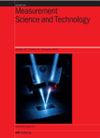FastGNet: An Efficient 6-DOF Grasp Detection Method with Multi-Attention Mechanisms and Point Transformer Network
IF 3.4
3区 工程技术
Q1 ENGINEERING, MULTIDISCIPLINARY
引用次数: 0
Abstract
A pivotal technology for autonomous robot grasping is efficient and accurate grasp pose detection, which enables robotic arms to grasp objects in cluttered environments without human intervention. However, most existing methods rely on PointNet or CNN as backbones for grasp pose prediction, which may lead to unnecessary computational overhead on invalid grasp points or background information. Consequently, performing efficient grasp pose detection for graspable points in complex scenes becomes a challenge. In this paper, we propose FastGNet, an end-to-end model that combines multiple attention mechanisms with the Transformer architecture to generate 6-DOF grasp poses efficiently. Our approach involves a novel sparse point cloud voxelization technique, preserving the complete mapping between points and voxels while generating positional embeddings for the Transformer network. By integrating unsupervised and supervised attention mechanisms into the grasp model, our method significantly improves the performance of focusing on graspable target points in complex scenes. The effectiveness of FastGNet is validated on the large-scale GraspNet-1Billion dataset. Our approach outperforms previous methods and achieves relatively fast inference times, highlighting its potential to advance autonomous robot grasping capabilities.FastGNet:采用多注意机制和点变换网络的高效 6-DOF 抓取检测方法
自主机器人抓取的一项关键技术是高效、准确的抓取姿势检测,它能使机械臂在杂乱的环境中抓取物体,而无需人工干预。然而,大多数现有方法都依赖于 PointNet 或 CNN 作为抓取姿势预测的骨干,这可能会导致无效抓取点或背景信息带来不必要的计算开销。因此,在复杂场景中对可抓取点进行高效的抓取姿态检测成为一项挑战。在本文中,我们提出了一种端到端模型 FastGNet,它将多种注意力机制与 Transformer 架构相结合,可高效生成 6-DOF 抓取姿势。我们的方法涉及一种新颖的稀疏点云体素化技术,在为 Transformer 网络生成位置嵌入的同时,保留了点与体素之间的完整映射。通过将无监督和有监督注意力机制整合到抓取模型中,我们的方法显著提高了在复杂场景中聚焦可抓取目标点的性能。FastGNet 的有效性在大型 GraspNet-1Billion 数据集上得到了验证。我们的方法优于之前的方法,并实现了相对较快的推理时间,这凸显了它在提高自主机器人抓取能力方面的潜力。
本文章由计算机程序翻译,如有差异,请以英文原文为准。
求助全文
约1分钟内获得全文
求助全文
来源期刊

Measurement Science and Technology
工程技术-工程:综合
CiteScore
4.30
自引率
16.70%
发文量
656
审稿时长
4.9 months
期刊介绍:
Measurement Science and Technology publishes articles on new measurement techniques and associated instrumentation. Papers that describe experiments must represent an advance in measurement science or measurement technique rather than the application of established experimental technique. Bearing in mind the multidisciplinary nature of the journal, authors must provide an introduction to their work that makes clear the novelty, significance, broader relevance of their work in a measurement context and relevance to the readership of Measurement Science and Technology. All submitted articles should contain consideration of the uncertainty, precision and/or accuracy of the measurements presented.
Subject coverage includes the theory, practice and application of measurement in physics, chemistry, engineering and the environmental and life sciences from inception to commercial exploitation. Publications in the journal should emphasize the novelty of reported methods, characterize them and demonstrate their performance using examples or applications.
 求助内容:
求助内容: 应助结果提醒方式:
应助结果提醒方式:


